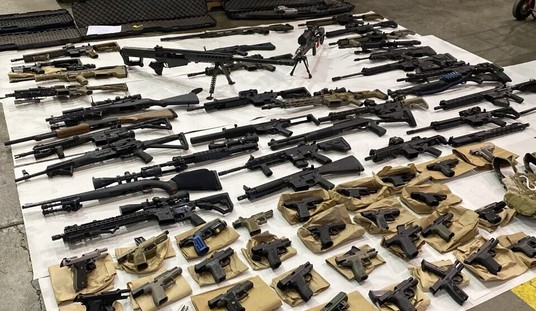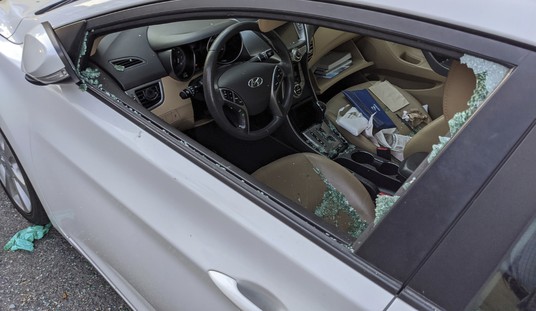This heart-wrenching video strongly suggests that we’re failing law enforcement officers with our “modern” training standards.
In this dash-camera footage, a York County, SC Sheriff’sdeputy pulls over a truck for expired tags. The elderly driver gets out of the cab and reaches something in the bed of the vehicle. The deputy yells several times in warning and then opens fire, spraying the truck (and the surrounding countryside) with six shots, hitting the man once in the stomach.
The senior citizen wilts under fire, slumping against the side of the truck as the deputy yells at him to drop the “gun.” Just a few second later the deputy realizes that the “gun” is a cane, and rushes to help the wounded man.
The local ABC News station describes the situation:
York County Deputy Terrance Knox is on administrative leave as state agents investigate the shooting last month of Bobby Canipe of North Carolina. In the video, Canipe quickly pulls over on the four-lane highway near Clover outside Charlotte after Knox puts on his blue lights and siren. Canipe’s tag had expired about six weeks earlier.
Canipe gets out of the pickup and turns toward the bed without acknowledging Knox as the deputy yells “Sir!” three times. Canipe reaches in the back and pulls out a slender object with the tip pointed at the officer. Knox yells “Whoa!” several times as he fires a half-dozen shots.
“It’s a walking stick,” Canipe said as the shots ended.
Knox shouted an expletive as he immediately ran to check on Canipe, who was hit once and expected to recover. The whole sequence takes about 15 seconds.
Knox begins to sob when another officer arrives a few minutes later and puts his arm around him.
“I promise to God I thought it was a shotgun,” Knox said in tears.
Before showing the video, York County Sheriff Bruce Bryant urged reporters to put themselves in the moment and see how Canipe doesn’t respond to the officer and pulls out the object in the dark. He said officers in South Carolina are allowed to use deadly force if they think their lives are in imminent danger.
As Sheriff Bruce Bryant notes, Canipe pulled out something of the bed of his truck, in the dark, that the deputy mistook for a firearm, and Canipe didn’t immediately drop it. According to their training, this was likely a “good shoot”… and that’s a problem for me, because this is a failure of training.
Modern law enforcement training is based largely on officer survivability. It’s about threat recognition, reaction times, and training techniques to increase the efficiency of officers responding to a world in where threats can come seemingly from anywhere and anyone.
Where this training is failing—and in my mind, is failing miserably—is that while it is succeeding in helping officers cut down their reaction times to legitimate threats, helping them get “off the x” and into action, they are utterly failing to account for those interaction where the threats are not real.
They’ve adopted (and are still adopting) training advancements based on human factors research to make officers faster, but are failing to account for the fact that non-threats will not be able to react to commands due to cognitive processing issues.
In other words, they’re getting officers ready to fight faster, without accounting for the fact that people who have no ill intentions are going to be befuddled and confused, and unable to react in what appears to be a timely manner to the officers, who are operating at a higher operational tempo thanks to their training.
Mr. Canipe’s shooting is a perfect example of this.
From his perspective, he was just coming to see the officer, and when the officer starting yelling, he was unable to process that the officer viewed him as a threat before the officer opened fire. Even after the two volleys of shots had been fired, he hardly responded. Even after Deputy Knox yelled at him to “drop the gun,” he didn’t move other than to slump from the shot that hit him, because he didn’t have a gun, and he was confused about what was going on.
There was simply too much information coming at Mr. Canipe for him to process it in a timely manner. This was not his fault.
From Deputy Knox’s perspective, he saw a man leave his vehicle, pick up something that he interpreted as a weapon, and he yelled three times before opening fire. He did everything by the book, as best as we can tell from the video. It wasn’t his fault, either.
The problem—and it seems to be a national problem affecting all levels of law enforcement—is that the training Knox and other law enforcement officers are receiving these days is geared towards surviving contact with hardened criminals, and doesn’t adequately account for the cognitive dissonance and processing time of people who are truly confused about what is going on at that moment. Most people encounter such cognitive processing problems will effectively freeze, or continue doing what they were starting to do as their brains process the officer’s commands and they then decide how to respond.
We end up in a situation where officers are trained to get off shots in over just a second if people don’t respond to commands, while people may take up to five seconds (or even more) to process the officer’s shouted commands.
I feel sorry for Mr. Canipe, who was shot in this incident (who is expected to recover, by the way), and for Deputy Knox, who is clearly distraught over shooting an unarmed man.
The irony of the situation is that 30 years ago, Deputy Know wouldn’t have had this level of training, and in some ways, that might have been better.
Knox wouldn’t likely have reacted as quickly to seeing Canipe pick up the object, and would likely have had time to process that the object Canipe had picked up out of the bed wasn’t being pointed at him, but was being pushed against the ground to support his weight. He might have been able to process that the man was no threat.
At the same time, if Canipe had been a threat, he most likely have gotten a first shot off at Knox under the old training without a system of threat recognition and having longer reaction times.
It seems to be a Catch-22: we need officers to think and react faster, but also need to train them to also slow down so that the subjects of their contacts can respond in a reasonable amount of time.
There has to be an equilibrium established in officer training, and the current training standards have swung too far into “stopping the threat,” while not adequately accounting for the fact that most people simply aren’t threats.










Join the conversation as a VIP Member